Morgan North’s multi-use complex features New York’s latest ‘park’ on its roof
Morgan North transforms what was once New York’s largest postal distribution centre into a sustainable, mixed-use hub of activity with a green roof
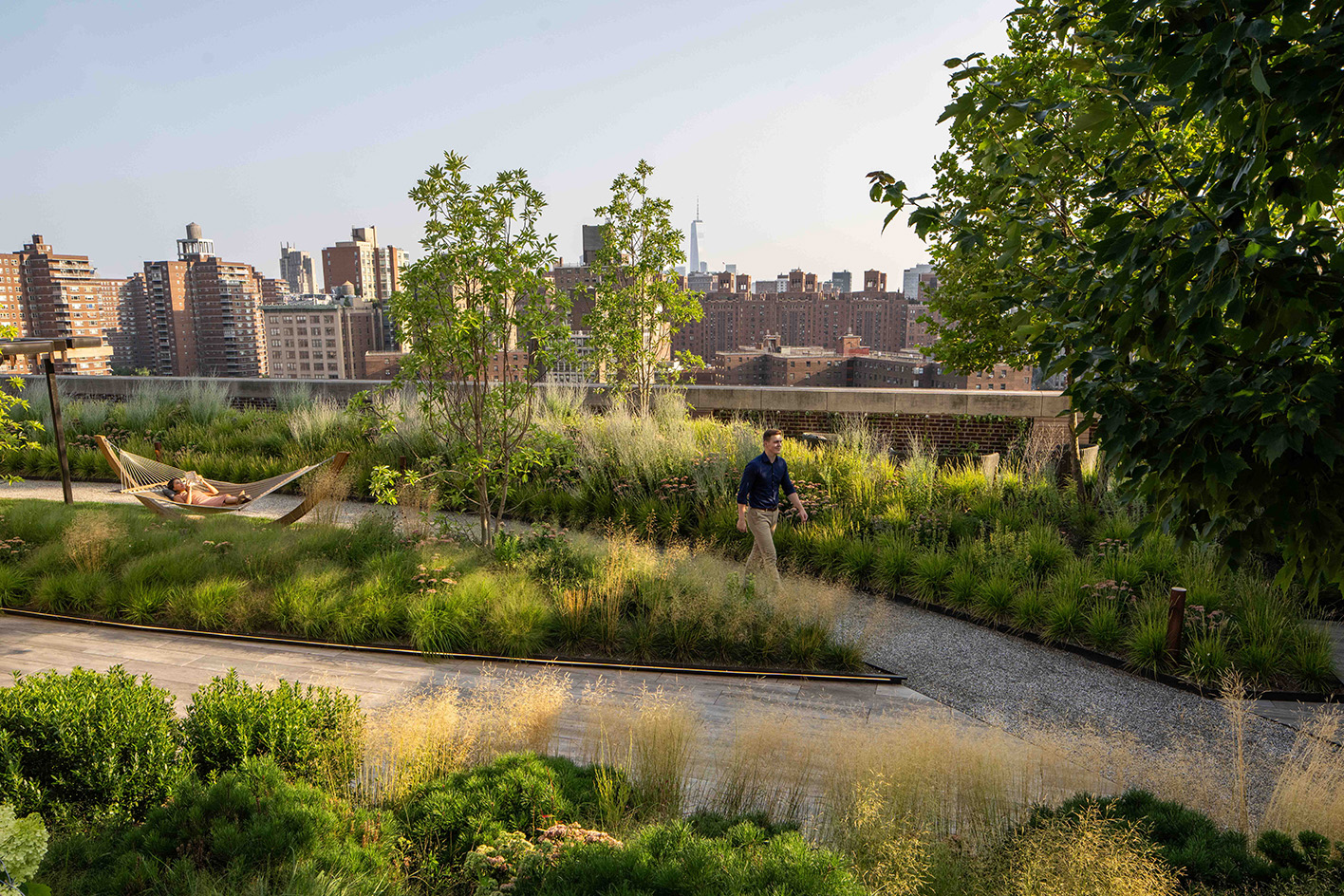
The complex, mixed-use project that is Morgan North sits in Midtown Manhattan – a part of town that is always in flux. Though demand for office space is changing, taller towers continue to pop up, replacing old structures and filling every last plot of land. It’s predicted that New York’s iconic skyline will be unrecognisable by 2030. And yet, rather than constantly building anew, a handful of developers have set their sights on transforming existing buildings, creating state-of-the-art facilities that meet new workplace standards while also preserving original characteristics.
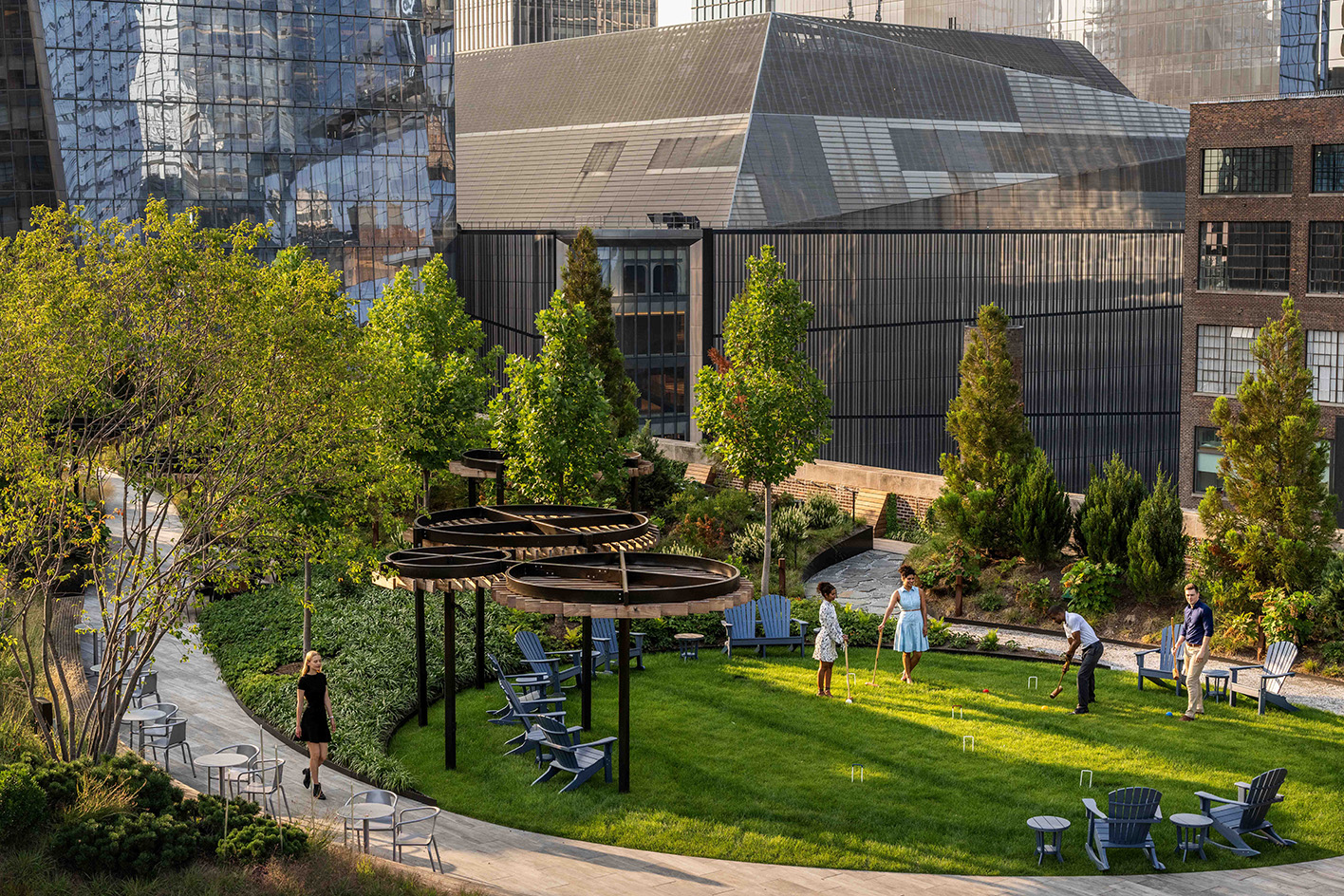
Morgan North: a USPS distribution hub reimagined
Case in point: this 197,000 sq m facility fashioned out of a former USPS (US postal service) distribution hub first erected in 1933. Situated near Hudson Yards and The Highline, between 29th Street and 30th Street, the six- to ten-storey full-city block monolith sits in a neighbourhood slated for significant redevelopment. Penn Station's transportation hub will be entirely revitalised in the next few years and everything around it will follow suit. Morgan North is leading the charge.

Tishman Speyer, the building’s owner, worked closely with Shimoda Design Group and Montroy DeMarco Architecture to outfit a wide array of flexible office floor set-ups primarily tailored for creative businesses. With an existing art deco lobby carefully restored and two more added, employers and their employees can access their units at different entry points. Oversized Douglas fir planks imbue these stark industrial spaces with warmth. New elevators and glazing provide a fresh look and feel. Skylights were introduced to bring in much-needed natural light.
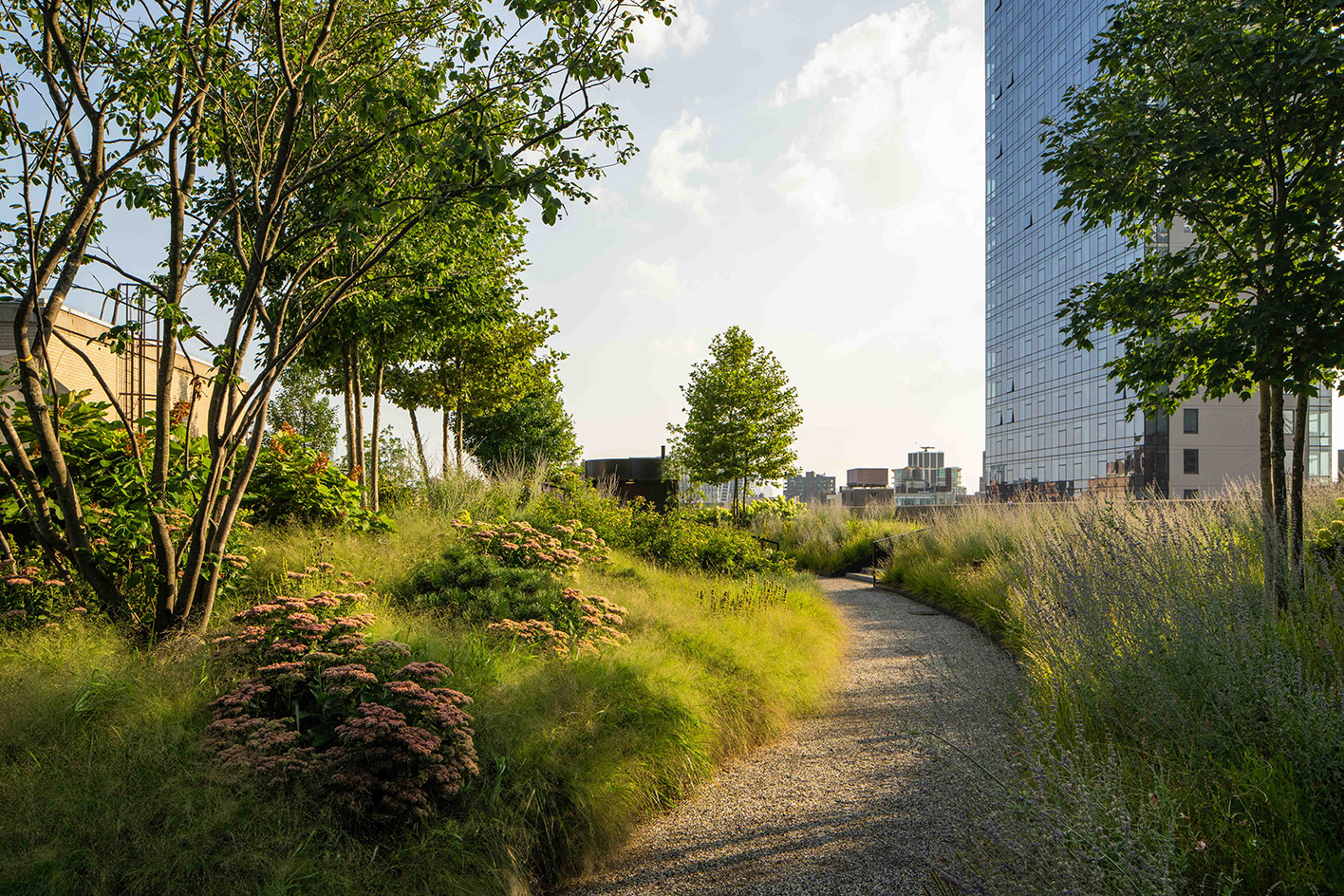
While ground-level retail spaces intermix with a few USPS loading docks still in operation, a 0.8-hectare rooftop garden is the icing on the cake. This large-scale amenity reflects the developer’s stated desire to bolster occupant health and wellbeing, but also a large push toward resourceful, biophilic design.
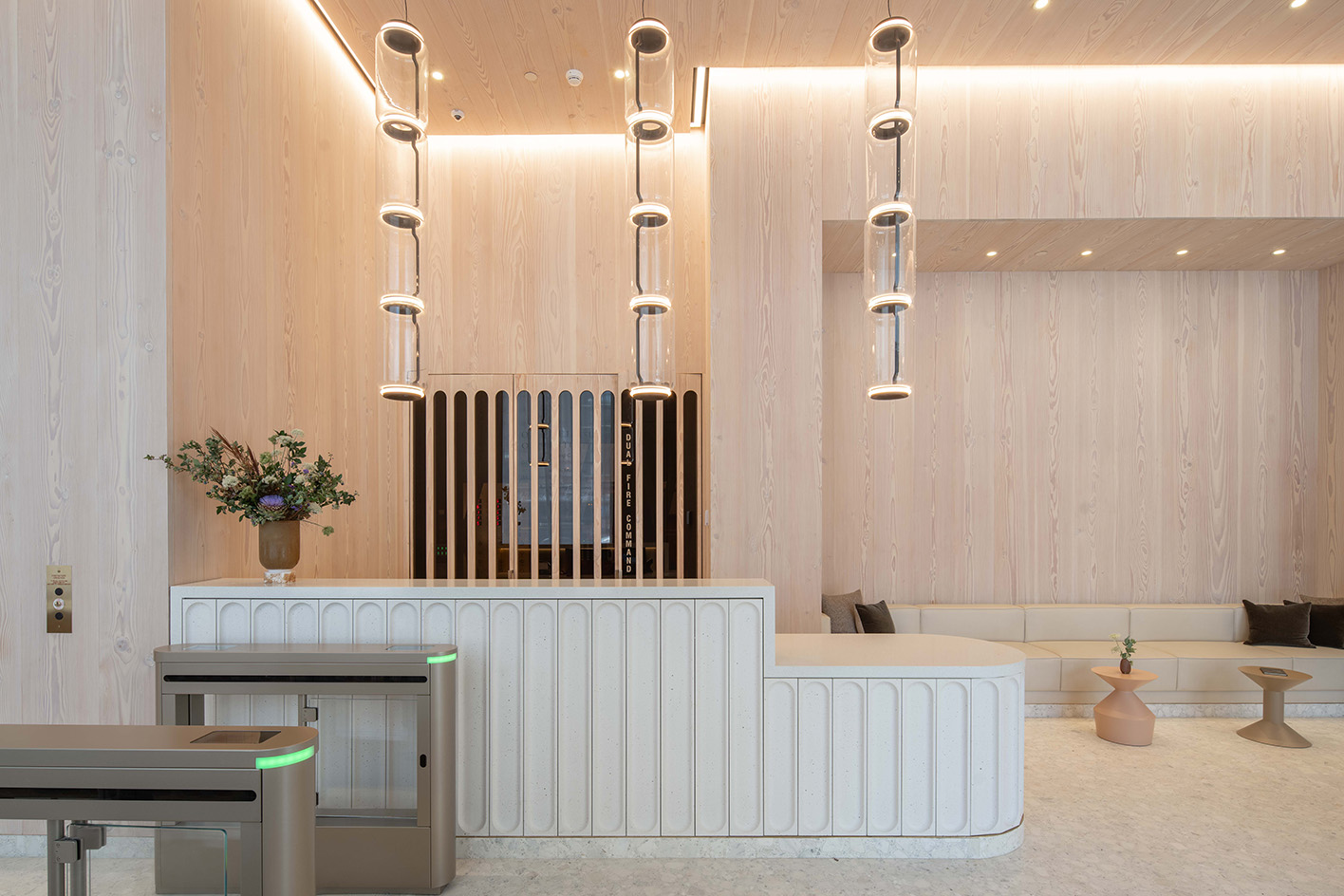
'Living roof technology and the transformative effect of Morgan North-like landscapes demonstrate exponential economic and micro and macro environmental benefits for cities’ unused existing and new roofs,' says Hank White, principal of HMWhite, the landscape architecture firm responsible for the design of this space, the largest garden of its kind in New York City.
'It is encouraging to witness how the adaptation of landscapes and “green” technologies’ integration into built environments are gaining momentum as a universally accepted mandate. Applying the natural world's functional properties as the prevailing “go-to” informant to building solutions will bring us closer to a planet-healing bio-urbanism future.'
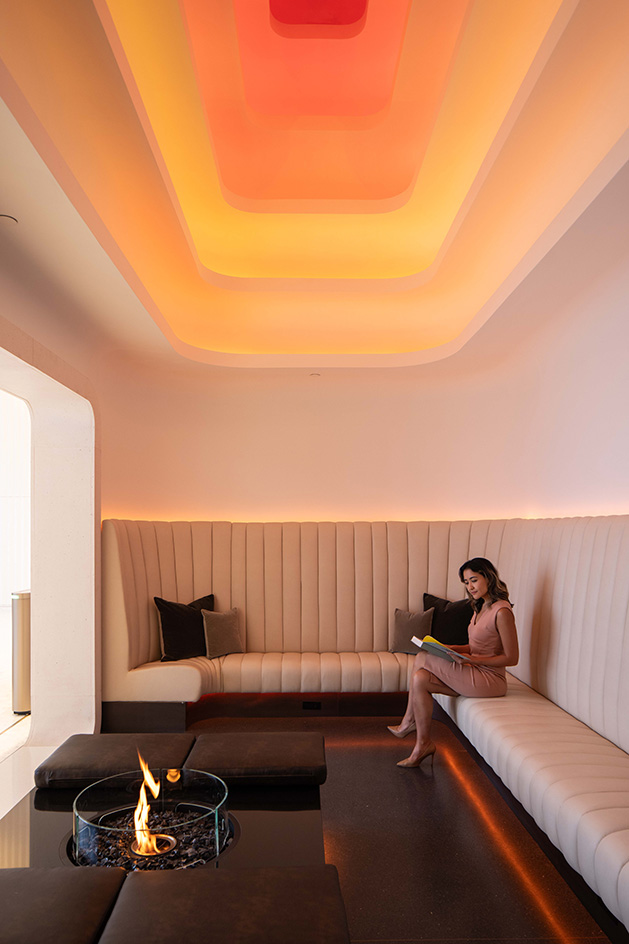
Encircling a sizable indoor rooftop event pavilion, the undulating landscape features meandering pathways, intimate seating, lawns for group activities, sports fields, and enhanced views. Every area was thought through to balance collaborative work, recreation, and quiet inspiration. There’s even a vegetable garden. While coniferous hedgerows protect against strong winds during colder months, a meticulously placed canopy of trees shields against harsh sun rays in summer.
Receive our daily digest of inspiration, escapism and design stories from around the world direct to your inbox.
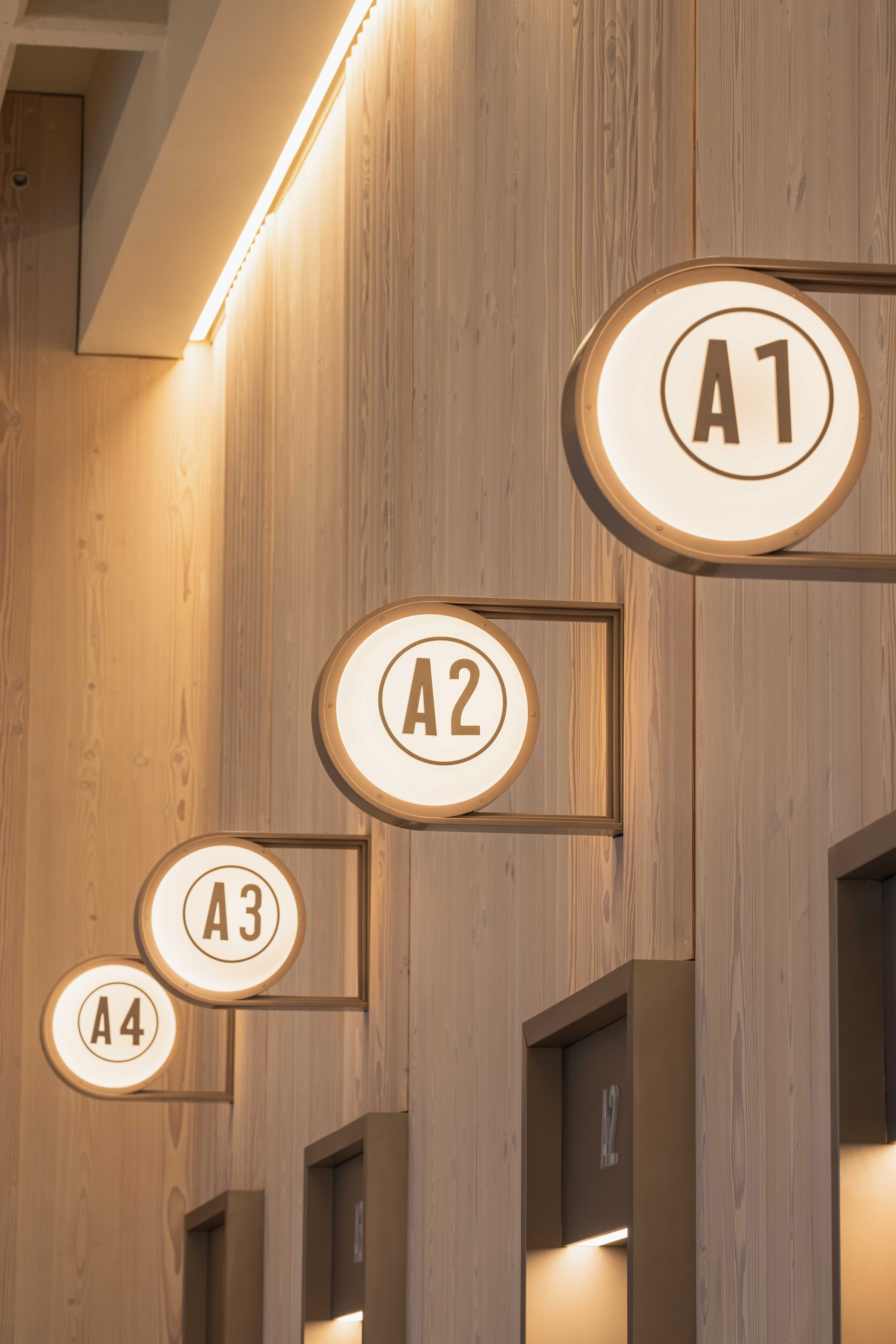
'Office-building outdoor rooftop amenities typically prioritise a variety of uses that rely on large assembly areas. Landscape is used as an accessory and “enhancing” punctuation. Alternatively, Morgan North’s rooftop is experienced as a series of complementary plant communities out of which a mix of social gathering areas are carved. Regional landscape types are used as a micro-climatic mitigating strategy to improve human comfort levels and extend seasonal usage,' White adds. The garden was imagined as a microcosm Northeastern woodland.

Layering this landscape was challenging but working with the 90-year-old building’s solid structure simplified the process. 'The number of trees, their sizes, and the soil volumes required to sustain them involved constant negotiations throughout the design process,' White concludes. 'The project’s economic feasibility required the reconciliation between creating a bold landscape vision within the building’s existing conditions and complying with its historic landmark status.' If all of this can be addressed, why aren’t more city roofs turned into parks?
Adrian Madlener is a Brussels-born, New York-based writer, curator, consultant, and artist. Over the past ten years, he’s held editorial positions at The Architect’s Newspaper, TLmag, and Frame magazine, while also contributing to publications such as Architectural Digest, Artnet News, Cultured, Domus, Dwell, Hypebeast, Galerie, and Metropolis. In 2023, He helped write the Vincenzo De Cotiis: Interiors monograph. With degrees from the Design Academy Eindhoven and Parsons School of Design, Adrian is particularly focused on topics that exemplify the best in craft-led experimentation and sustainability.
-
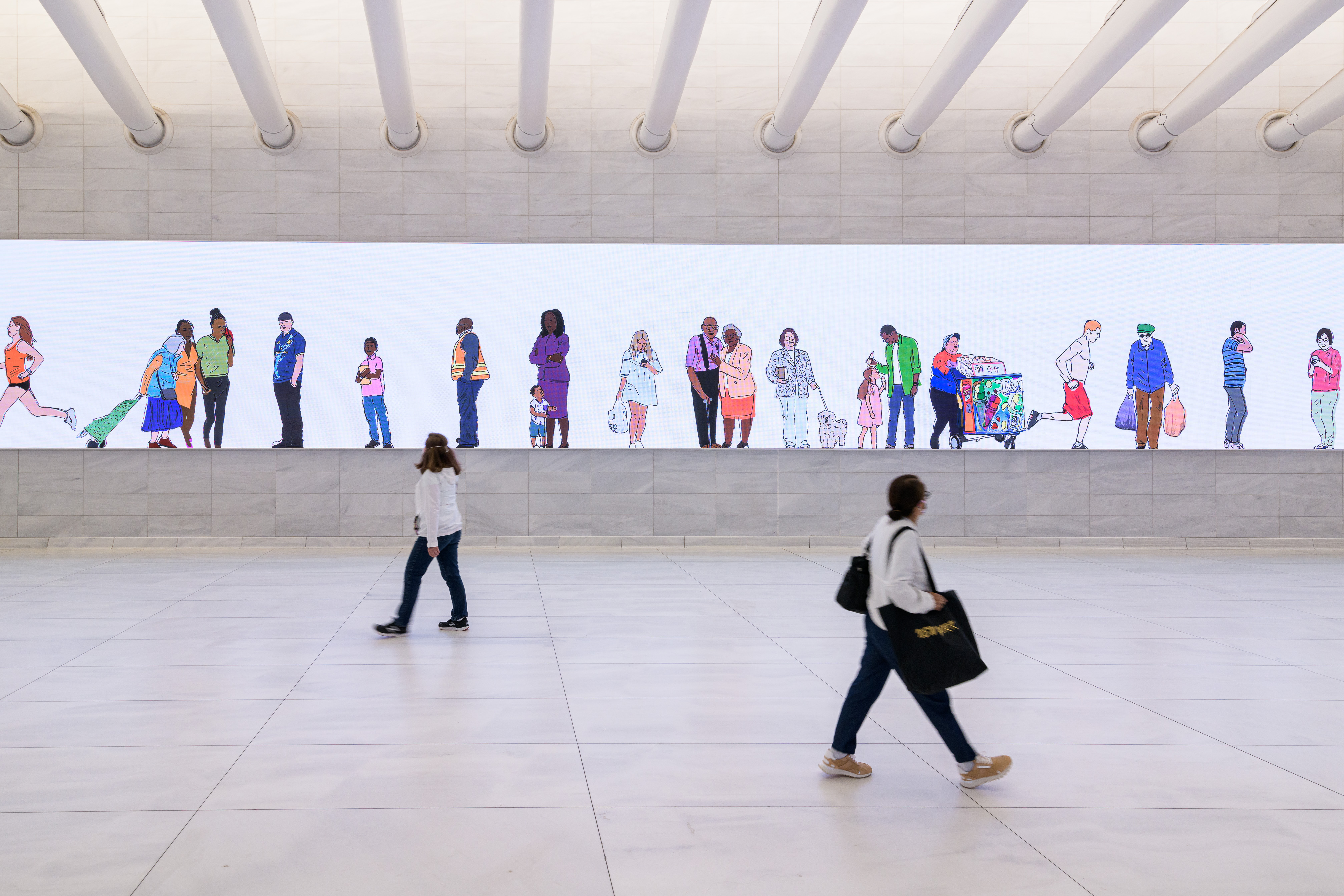 'Design at its most ambitious': meet the 2025 Royal Designers for Industry
'Design at its most ambitious': meet the 2025 Royal Designers for IndustryThe Royal Society for Arts announces the five new Royal Designers for Industry as well as two Honorary Royal Designers for Industry
-
 A new art museum brings colour, quirk and a celebration of creativity to Doha
A new art museum brings colour, quirk and a celebration of creativity to DohaLawh Wa Qalam: M. F. Husain Museum is awash with colour and character, courtesy of Indian architect Martand Khosla and the Qatar Foundation
-
 Out of office: The Wallpaper* editors’ picks of the week
Out of office: The Wallpaper* editors’ picks of the weekThis week, the Wallpaper* team had its finger on the pulse of architecture, interiors and fashion – while also scooping the latest on the Radiohead reunion and London’s buzziest pizza
-
 The Stahl House – an icon of mid-century modernism – is for sale in Los Angeles
The Stahl House – an icon of mid-century modernism – is for sale in Los AngelesAfter 65 years in the hands of the same family, the home, also known as Case Study House #22, has been listed for $25 million
-
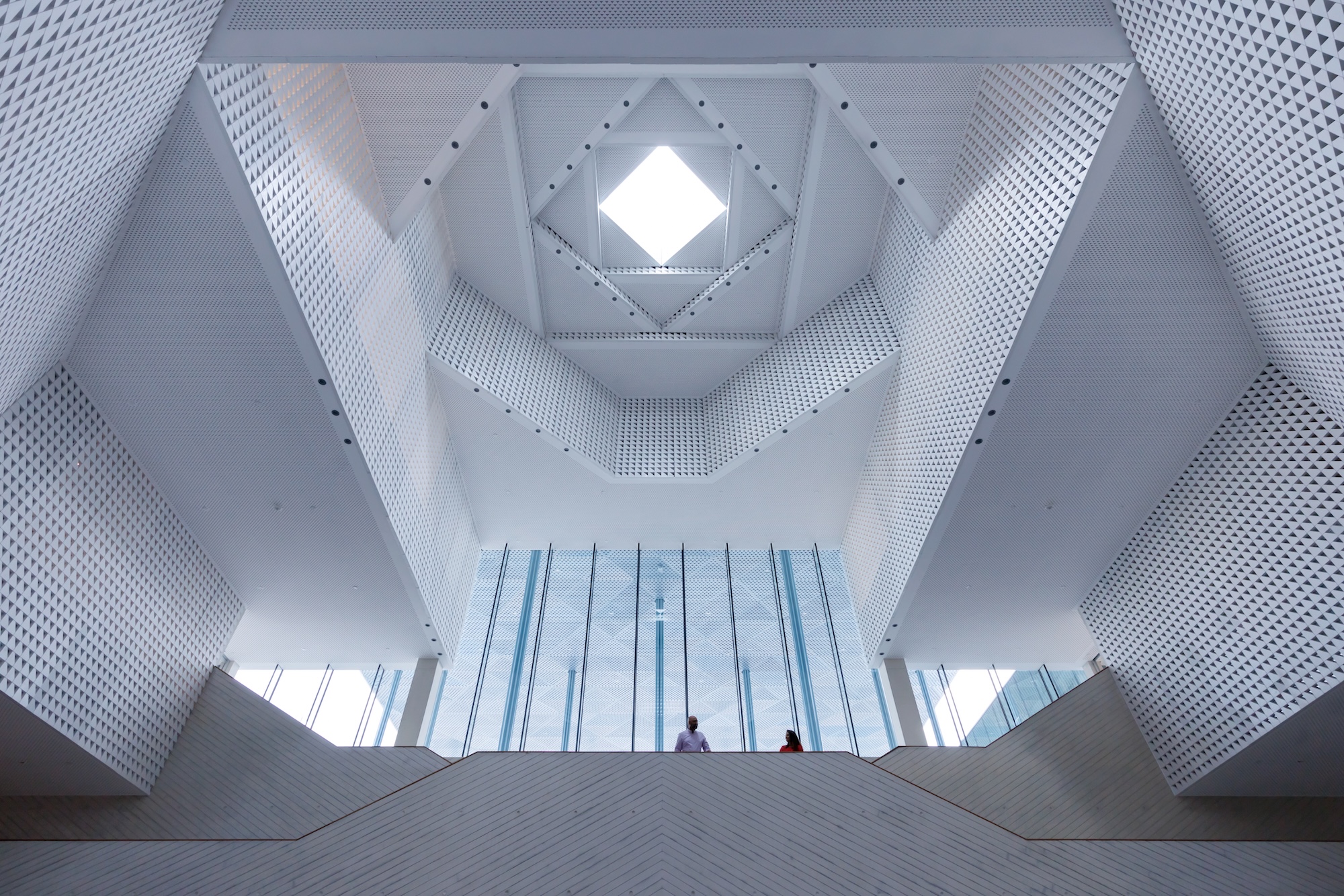 Houston's Ismaili Centre is the most dazzling new building in America. Here's a look inside
Houston's Ismaili Centre is the most dazzling new building in America. Here's a look insideLondon-based architect Farshid Moussavi designed a new building open to all – and in the process, has created a gleaming new monument
-
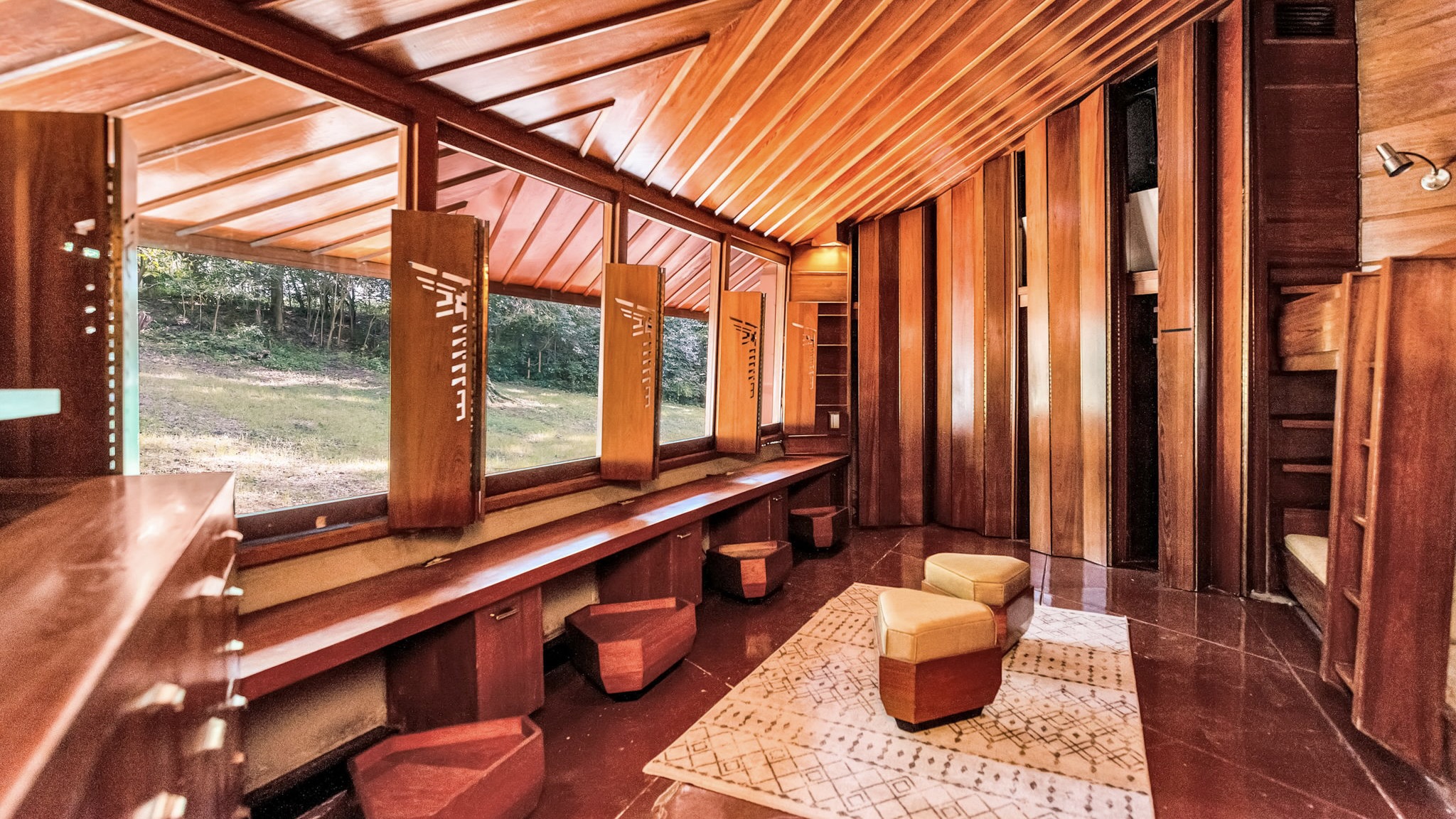 Frank Lloyd Wright’s Fountainhead will be opened to the public for the first time
Frank Lloyd Wright’s Fountainhead will be opened to the public for the first timeThe home, a defining example of the architect’s vision for American design, has been acquired by the Mississippi Museum of Art, which will open it to the public, giving visitors the chance to experience Frank Lloyd Wright’s genius firsthand
-
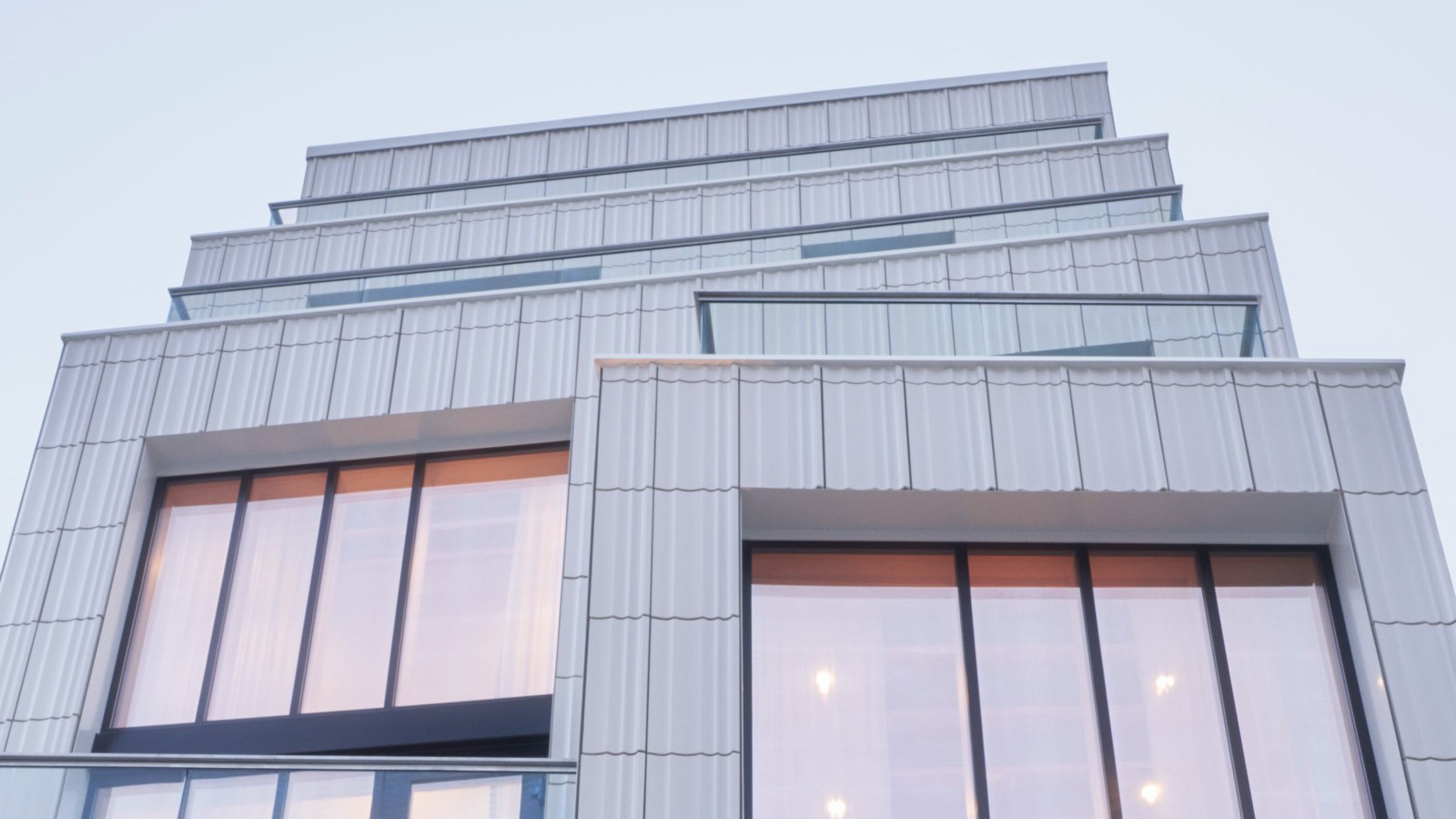 Clad in terracotta, these new Williamsburg homes blend loft living and an organic feel
Clad in terracotta, these new Williamsburg homes blend loft living and an organic feelThe Williamsburg homes inside 103 Grand Street, designed by Brooklyn-based architects Of Possible, bring together elegant interiors and dramatic outdoor space in a slick, stacked volume
-
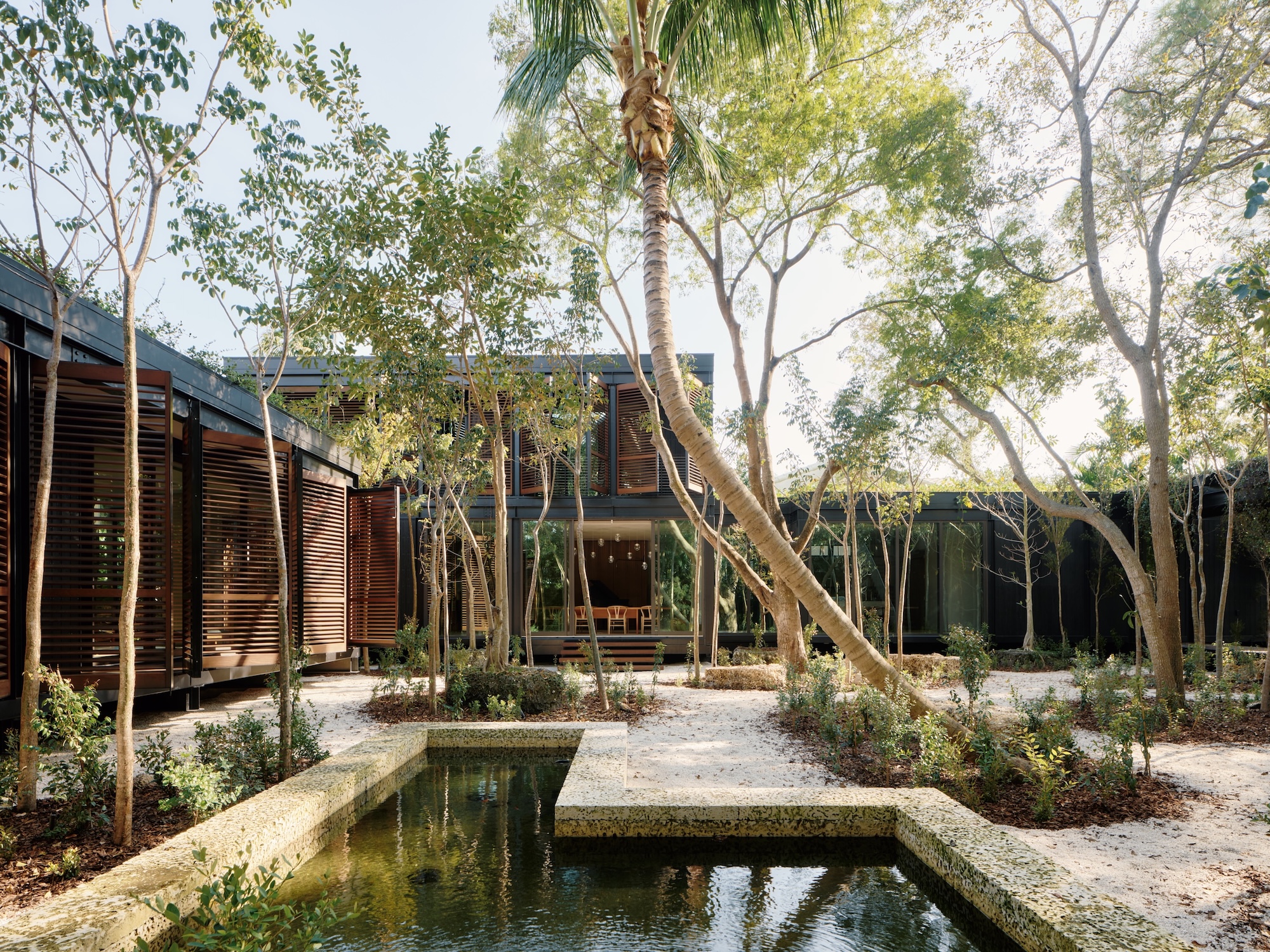 This ethereal Miami residence sprouted out of a wild, jungle-like garden
This ethereal Miami residence sprouted out of a wild, jungle-like gardenA Miami couple tapped local firm Brillhart Architecture to design them a house that merged Florida vernacular, Paul Rudolph and 'too many plants to count’
-
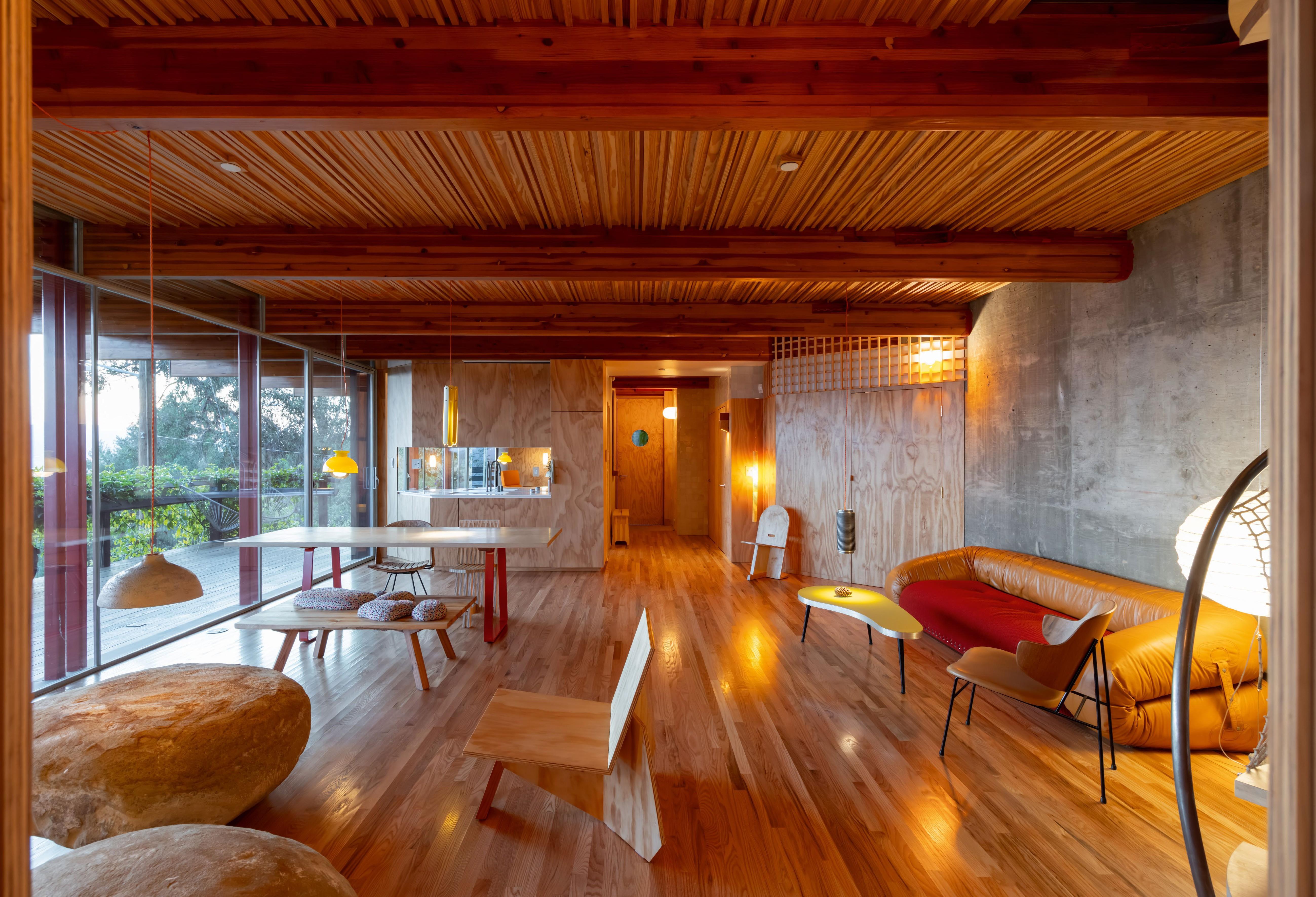 Tour Cano House, a Los Angeles home like no other, full of colour and quirk
Tour Cano House, a Los Angeles home like no other, full of colour and quirkCano House is a case study for tranquil city living, cantilevering cleverly over a steep site in LA’s Mount Washington and fusing California modernism with contemporary flair
-
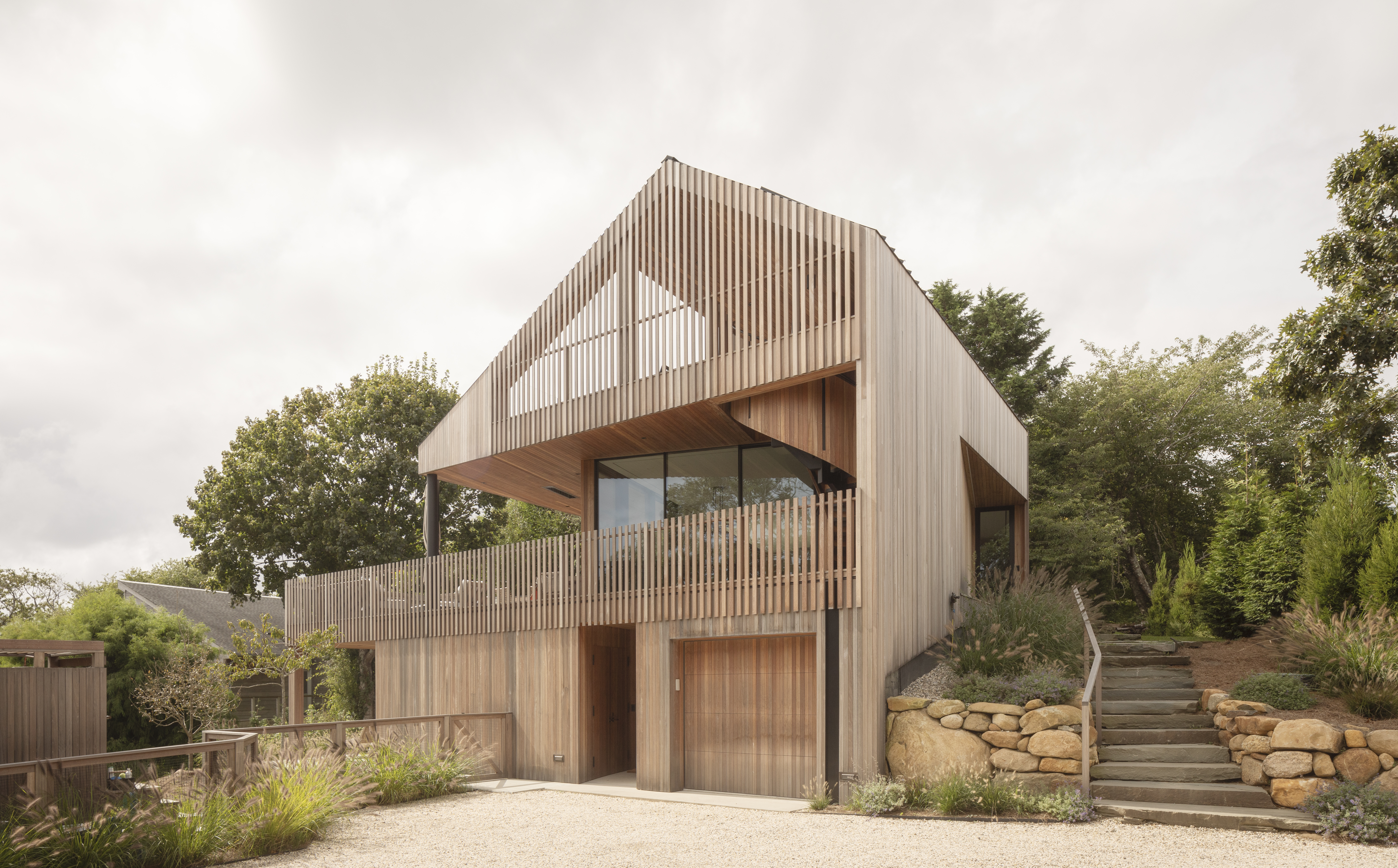 An ocean-facing Montauk house is 'a coming-of-age, a celebration, a lair'
An ocean-facing Montauk house is 'a coming-of-age, a celebration, a lair'A Montauk house on Hither Hills, designed by Hampton architects Oza Sabbeth, is wrapped in timber and connects its residents with the ocean
-
 With a freshly expanded arts centre at Dartmouth College, Snøhetta brings levity to the Ivy League
With a freshly expanded arts centre at Dartmouth College, Snøhetta brings levity to the Ivy LeagueThe revamped Hopkins Center for the Arts – a prototype for the Met Opera house in New York –has unveiled its gleaming new update